
Prysmian Hires NextGeo for Interconnector and Offshore Wind Survey Work
Italian offshore services provider Next Geosolutions (NextGeo) has secured two new contracts from Prysmian, worth $23.5 million, to deliver its services for Bay of Biscay interconnection project and offshore wind farm developments in the Netherlands.The first contract is for the Bay of Biscay interconnection project, an HVDC cable system that will link coastal areas of Spain and France.Under the contract, NextGeo will carry out route preparation activities, between 2025 and 2027, delivering a range of seabed services to enable the subsequent cable installation phase, to be executed by Prysmian.From
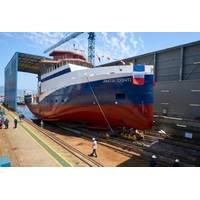
Ifremer’s French Oceanographic Fleet Welcomes New Research Vessel
will be capable of operating advanced underwater vehicles such as AsterX, IdefX, UlyX and Ariane.The French-flagged oceanographic vessel will have an overall length of 45 meters and a beam of 11.5 meters.It has been designed to carry out research missions in coastal areas in mainland French waters (Bay of Biscay, Channel) but may also be deployed in certain years on the coast of Africa and in the Antilles and French West Indies-Guyana zone. It will house a crew of 12 people and 10 scientists.The Anita Conti stands out for the wide range of energy-saving technologies and low-consumption solutions implemented

EIB Pledges $1.8B for Span-France Bay of Biscay Interconnector
The European Investment Bank (EIB) has allocated $1.84 billion to finance the construction of the Bay of Biscay electricity interconnection between Spain and France.The EIB financing for the Bay of Biscay project takes the form of loans to Spanish and French transmission-system operators Red Eléctrica and RTE Réseau de transport d’électricité.Construction of the Bay of Biscay link is already under way by Inelfe – joint venture by RTE and Red Eléctrica, and it is due to become operational in 2028.The connection will link two alternating current systems via
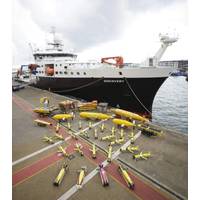
NOC Scheduled for 31 Science Expeditions in 2023
The National Oceanography Center (NOC), home to RRS James Cook and RRS Discovery, is managing 31 global research missions in 2023.This will include missions to the Bay of Biscay where NOC’s Marine Autonomous Robotic Systems team will be trialling its fleet of AUV’s and gliders to test autonomous ocean research capabilities, an expedition to quantify deep sea ecosystem resilience in the Pacific, and a research mission to Norway to study the role nitrogen plays in Arctic biogeochemistry.Previous expeditions include the DY158 expedition which took place earlier this year and circumnavigated

Subsea Power Link Between Spain and France to Go Ahead Despite Cost Increase
French energy regulator CRE gave the go-ahead to a new cost-sharing deal between the two countries for a project first broached in 2017 after a sharp increase in its estimated cost.The 400-km-long (250-mile-long) cable spanning from Spain's northern coast to France's western coast through the Bay of Biscay is now estimated at a total cost of around 2.85 billion euros ($3.01 billion), above the initial estimate of 1.75 billion euros, CNMC said.The European Union will contribute at least 578 million euros towards the cost, it said.After discounting EU aid, the distribution of costs will be 54% for
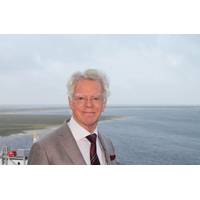
Edward Heerema – Dutch Courage with Single-minded Focus
energy system any time soon, he does see it as a nice addition, including a fill-in work for Pioneering Spirit.Indeed, Pioneering Spirit completed its first offshore wind project last year, installing the Saint Nazaire offshore windfarm subsea station 2,100 ton topsides and 1,200 ton jacket, in the Bay of Biscay. This was using the vessel’s 5,000 ton tub-mounted Huisman crane, installed after the vessel entered service as a useful additional tool. The same crane has since installed the 3,870 ton Hollands Kust Zuid Alpha transformer station in the Dutch North Sea and will shortly install the Beta
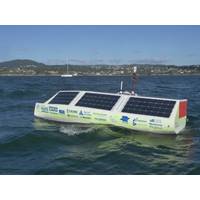
Solar-powered Autonomous Vessel Crosses the Atlantic
as many success stories do, in the founder’s garage. Pieter-Jan Note assembled six friends from a variety of engineering backgrounds. They spent the next few years building, designing and writing software. “Our first crossing attempt in 2019 capsized during an unusually heavy storm in the Bay of Biscay,” Note said. “We learned a lot from that short journey, however, and used that knowledge to build Mahi Two.”The four-meter Mahi Two has a composite hull for strength, efficiency and durability. It is driven by a Torqeedo Cruise 2.0 pod drive which the team modified to rotate
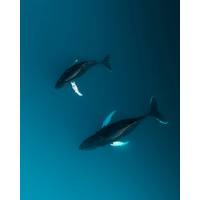
SPACEWHALE: Space Tech, AI meet to Monitor Whales from the Heavans
algorithm trained in this way could subsequently recognise 23-metre-long fin whales and other whale species on satellite images.Initial trials of SPACEWHALE proved successful: in the Mediterranean Sea, the algorithm detected almost twice as many fin whales as a previous manual investigation. In the Bay of Biscay, the algorithm detected fin whales and three other whale species. SPACEWHALE successfully counted humpback whales off the Hawaiian and Southern Right Whales off the Argentinian coasts.“SPACEWHALE makes a significant contribution to marine conservation; artificial intelligence combined with
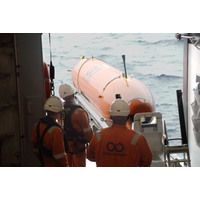
Salvors Survey Grande America Wreck
Seabed survey and ocean exploration company Ocean Infinity said it has conducted urgent subsea search, inspection and operations on the wreck of the MV Grande America, which sank in the Bay of Biscay on March 12.Grande America capsized and sunk last month after its cargo of containers and vehicles caught fire during a voyage from Hamburg to Casablanca.Having entered into an agreement with marine services and salvage company Ardent, Ocean Infinity deployed its fleet of autonomous underwater vehicles (AUV) to locate the wreck. The firm then used its remotely operated underwater vehicles (ROV) to conduct

 August 2025
August 2025





